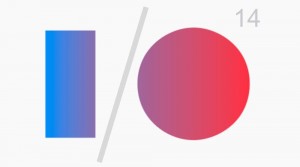By Anca Gagiuc on July 2, 2014 in Technology
A wave of announcements flooded Google’s I/O conference this year. The almost three hour keynote included anticipated news, as well as surprises. Gone are the days when technology companies can focus solely on their own products when presenting them. Whenever Google or Apple introdu ce a new feature, it is instantly compared with the competing counterpart, and the alternative will likely be mentioned with more or less subtlety.
ce a new feature, it is instantly compared with the competing counterpart, and the alternative will likely be mentioned with more or less subtlety.
Points of comparison are hard to in down as both giants’ mobile platforms seem to resemble one another more and more, in both functionality and purpose: Apple has Continuity between OS X and iOS, and now Google introduced synced notifications between Chrome OS and Android. Apple announced HealthKit and Google presented Google Fit – the mission of both appears to be the development of seamless ecosystems of hardware, software and services that keeps users faithful to one or the other.
Here are some highlights from Google’s conference in San Francisco.
Android L is the successor to Android Kit-Kat; it was presented as the biggest upgrades ever done to Android. The most noticeable ones are the design changes – the sleek Holo theme of KitKat is being replaced with the colorful new Material Design, a new design language which is based on basic shapes and sheets of paper. Material Design gives developers the ability to add the illusion of depth, featuring a grid-based layout so that it can be easily ported to different screen sizes. L has been deeply integrated with Android Wear platform, fact that allows users unlock their smartphones without a pin code if they are wearing a smartwatch. Notifications received a makeover too, allowing users to respond to notifications directly from the lock screen.
Mobile Chrome will take advantage of the Material Design as it features fast and fluid animations at 60 frames per second, transforming scrolling into the gesture of flipping through an image book. Battery life is one of Google’s items on the To Do list (Project Volta) and it has a new Battery Historian that shows what’s draining it; it comes with a new battery saver mode that can help improve battery performance by up to 90 percent, says Google.
Android Wear is built to support various screen configurations. It understands the user’s voice for easy interaction. Entry of reminders via a wearable device are synced with the users’ phone. It also performs Google searches via voice and shows call notifications, letting the user decline calls from the wrist. A Do Not Disturb mode can also be set via the watch. Through Google Now, contextual information is delivered throughout the day – dining reservations, transit schedules, tickets – displayed on the watch. Dismissing an app on the watch means dismissing it on the phone as well. For those interested in monitoring bodymetrics, it can count steps and heart rates.
The LG G watch is available on the Play Store as is the Samsung Gear Live. The Moto 360, the first round Android Wear watch will become available later this summer.
Android Auto is the way to use connected Android apps and services in the car, with focus on navigation, communication, and music. This means that Android is now able to give travel information in a timely manner through voice command. Android Auto SDK will be released soon to support car-app development that’s mainly focused on audio and messaging (that enables the user to respond via voice).
Android TV is “giving TV the same level of attention as your phone and tablet” as per Google’s Dave Burke; it basically relates to the TV as it does to any Android screen. The simple UI reacts to the usage patterns and it can be navigated on through the Android Wear watch. It includes full Google cast support – you can use it like a Chromecast (yes, you can go to someone else’s house and play your videos and music). Android TV is conducted through the Search function; saying the name of a movie, song, or any keyword will trigger a set of responses right on your screen.
Speaking of Chromecast, the device is getting a new photos experience, the Backdrop. This feature lets the user cast their photos to the TV, and to select theme-specific images like art, lifestyle, place, weather, etc. that are curated by Google; moreover, each topic has synced cards enabling the user to learn more about what they’re seeing. It ships later this summer.
Cloud Services have been brought into discussion, aiming to make it as easy as possible for developers to offload data, tracing, debugging, and processing functions to the cloud.
After this year’s upgrades, both dominant mobile platforms seem to sync in time and direction: unifying the user experience across all devices and expanding outside of the just mobile world to wearables, cars, health, and the home. The future announces a competition tighter than ever; whose side are you on?


